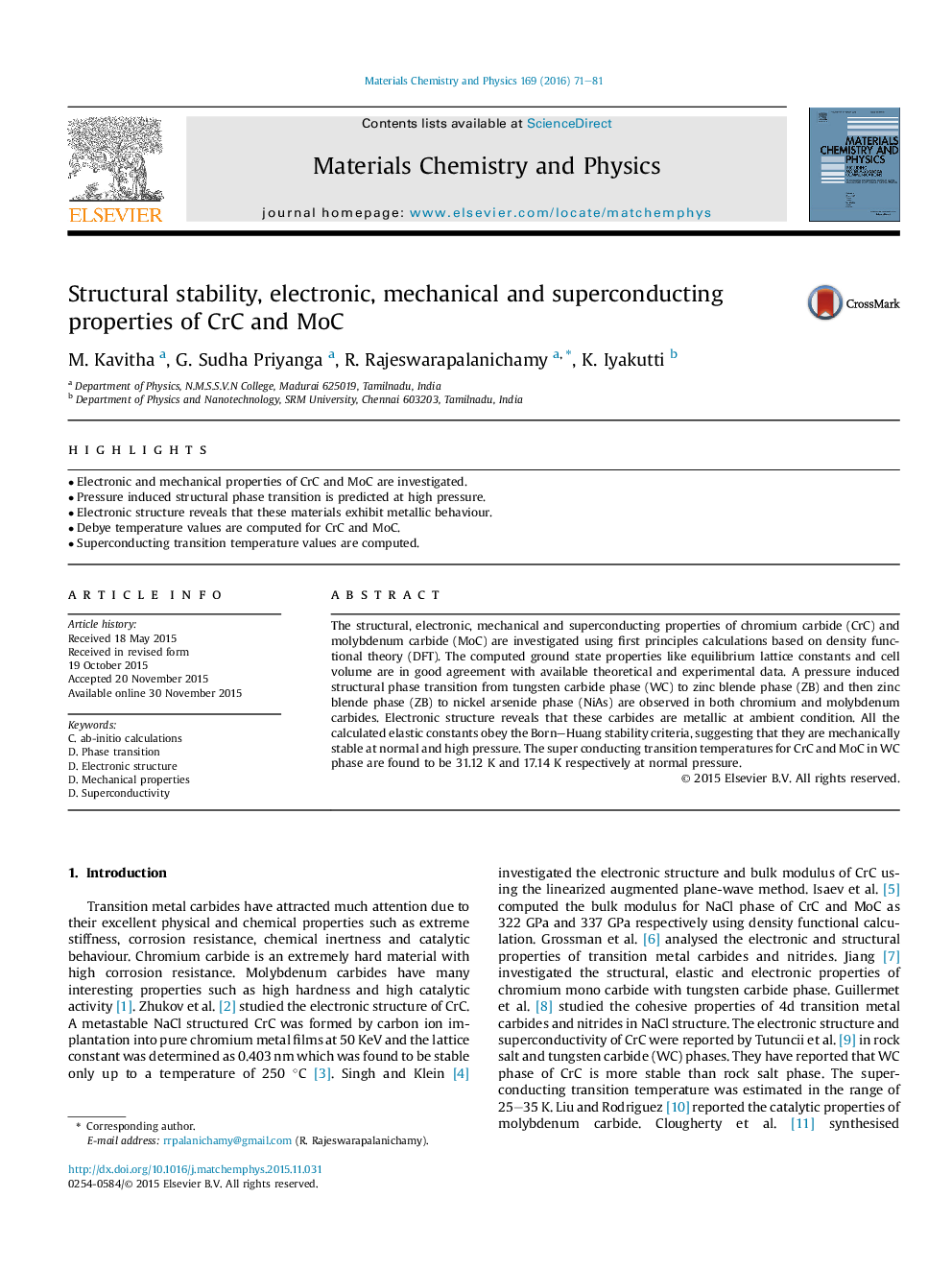| Article ID | Journal | Published Year | Pages | File Type |
|---|---|---|---|---|
| 1521030 | Materials Chemistry and Physics | 2016 | 11 Pages |
Abstract
The structural, electronic, mechanical and superconducting properties of chromium carbide (CrC) and molybdenum carbide (MoC) are investigated using first principles calculations based on density functional theory (DFT). The computed ground state properties like equilibrium lattice constants and cell volume are in good agreement with available theoretical and experimental data. A pressure induced structural phase transition from tungsten carbide phase (WC) to zinc blende phase (ZB) and then zinc blende phase (ZB) to nickel arsenide phase (NiAs) are observed in both chromium and molybdenum carbides. Electronic structure reveals that these carbides are metallic at ambient condition. All the calculated elastic constants obey the Born-Huang stability criteria, suggesting that they are mechanically stable at normal and high pressure. The super conducting transition temperatures for CrC and MoC in WC phase are found to be 31.12Â K and 17.14Â K respectively at normal pressure.
Keywords
Related Topics
Physical Sciences and Engineering
Materials Science
Electronic, Optical and Magnetic Materials
Authors
M. Kavitha, G. Sudha Priyanga, R. Rajeswarapalanichamy, K. Iyakutti,
